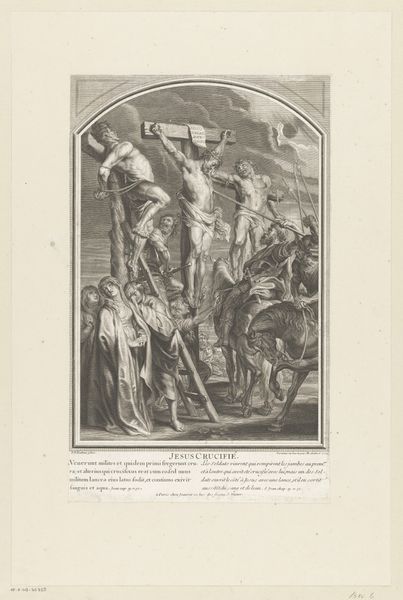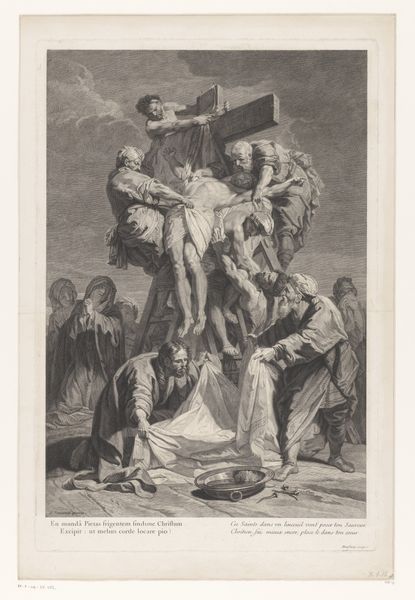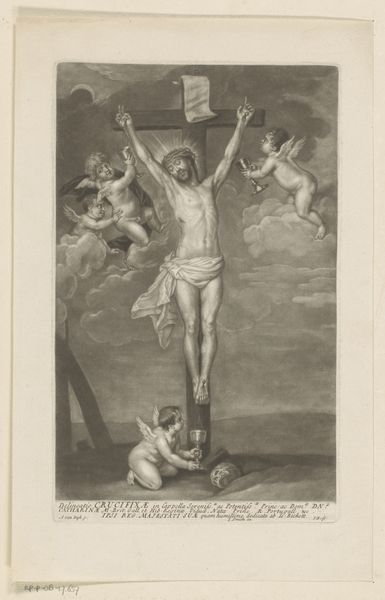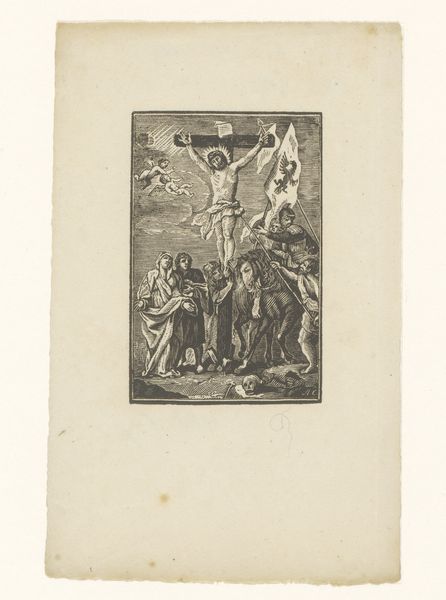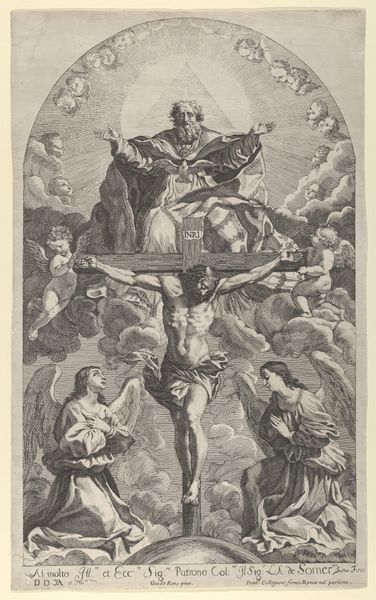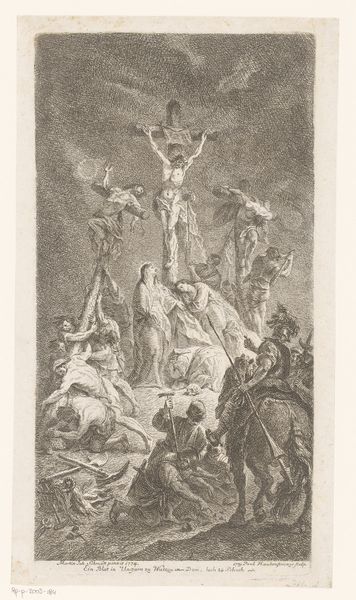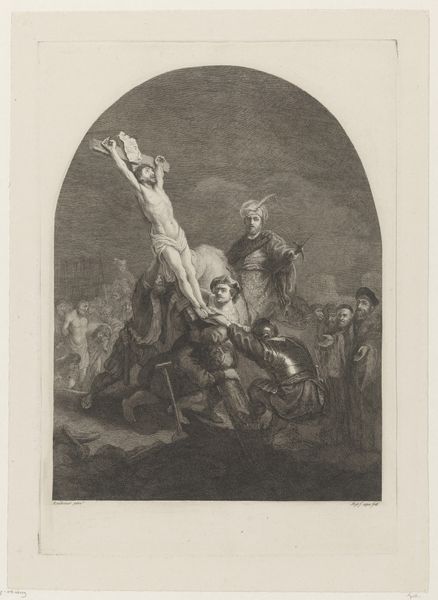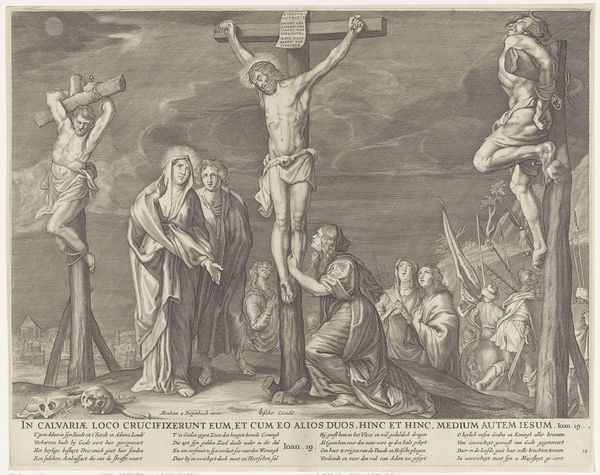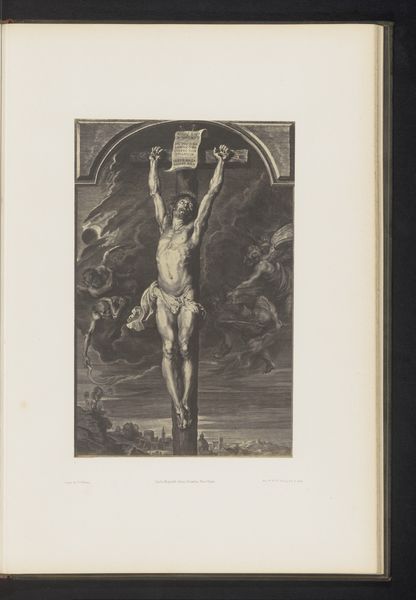
engraving
#
baroque
#
old engraving style
#
figuration
#
line
#
history-painting
#
engraving
Dimensions: height 352 mm, width 225 mm
Copyright: Rijks Museum: Open Domain
Curator: This engraving is "Kruisiging van Christus," or "Crucifixion of Christ," dating roughly from 1675 to 1727, and created by Claude Duflos. What’s your immediate take? Editor: It feels… dramatic, wouldn't you agree? The scene is very crowded. There’s something almost operatic about the figures and the way they're positioned. Definitely evokes a strong emotional response. Curator: Absolutely. Duflos really captures that Baroque flair for the theatrical. This piece, typical of history paintings from that period, aimed to evoke piety and reverence. The composition, with Christ elevated on the cross and a crowd of figures mourning below, directs our gaze—and emotions—quite deliberately. It reminds us about public art and it´s goal for people. Editor: It also feels meticulously crafted, down to every last stroke. Engraving demands precision, doesn’t it? I imagine the artist pouring over every detail, wanting to reflect both suffering and divinity. Do you think it might suggest certain philosophical views about humankind´s relationship with religion? Curator: I'd say that’s a very perceptive reading. Duflos was working within a tradition where religious art served not just a decorative or narrative purpose, but as a vehicle for conveying theological and moral messages. Editor: So, it becomes more than just a depiction; it’s an interpretation. Look at the angel-like figures near Christ... It appears that light from the upper left bathes Christ in divinity... How about its original location or target audience? Would the context reveal anything about what Duflos aimed for? Curator: As it is a reproducible engraving, there´s some ambiguity. Duflos likely intended this work for a wider audience, circulating religious imagery and reinforcing the doctrines of the Church. As to target audience and specific philosophical message, those were likely defined at a personal level. Editor: Ultimately, a work that encourages reflection. One that can evoke sorrow while also revealing art's subtle complexities... I am thankful to Duflos. Curator: I agree. This "Crucifixion" reveals the power of religious iconography to inspire devotion.
Comments
No comments
Be the first to comment and join the conversation on the ultimate creative platform.
